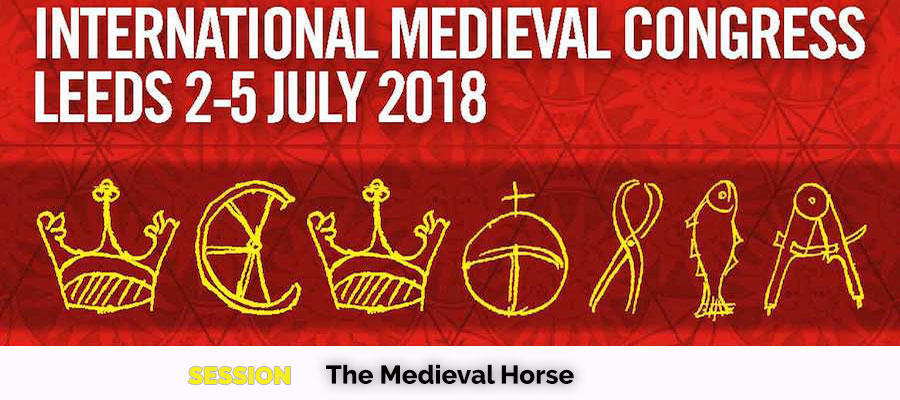The Medieval Horse, 25th International Medieval Congress, University of Leeds, July 2–5, 2018
Palfreys and rounceys, hackneys and packhorses, warhorses and coursers, not to mention the mysterious ‘dung mare’ – they were all part of everyday life in the Middle Ages. Every cleric and monk, no matter how immersed in his devotional routine and books he would be, every nun, no matter how reclusive her life, every peasant, no matter how poor his household, would have some experience of horses. To the medieval people, horses were as habitual as cars in the modern times. Besides, there was the daily co-existence with horses to which many representatives of the gentry and nobility – both male and female – were exposed, which far exceeds the experience of most amateur riders today. We cannot reconstruct or re-experience the familiar and casual communication between humans and equids of the Middle Ages – or can we? At our sessions on the Medieval Horse, we will try to deduce, describe and debate the place of the horse in medieval society.
We welcome submissions on any aspect of medieval equestrianism and engagement with horses and similar beasts of burdens, whether in military, civilian, industrial or agricultural context, from a variety of disciplines as well as papers that approach the subject using experimental and reconstruction methodologies.
In particular, we would be interested in contributions on the following themes:
- Archaeological approaches to horse equipment and harness
- Osteological research into remains of equids from medieval contexts
- Equids and other ridden animals in medieval society and thought (including donkeys and mules, as well as camels, elephants and other exotic ridden animals, and even fantastic creatures – the unicorn, the centaur, the hybrids and grotesques in the marginalia, etc.)
- Horses in the oriental culture
- Medieval veterinary and hippiatric care and farriery
- Employment of the horses for hunting, parade, travelling and agricultural activity
- Military horses and their typology
- Horses in literature and art
- Post-medieval representation of the medieval horse
At IMC 2018, we intend to open the scope of the discussion by organising a Round Table on the theme “Reconstructing the Medieval Horse”, in line with the Congress theme for the next year – Memory. We invite contributions to the Round Table, commenting on the reconstruction of the medieval horse from any perspective: whether as practitioners, consultants, participants in medieval themed equestrian events. More generally, we would like to discuss the extent to which the medieval horse can be reconstructed – if at all – and ways in which aspects of medieval equestrian culture and lore (chivalric, veterinary, breeding, training, horse care, etc.) can be applied in the modern world.
Session organizers
Dr. Timothy Dawson
Dr. Anastasija Ropa
